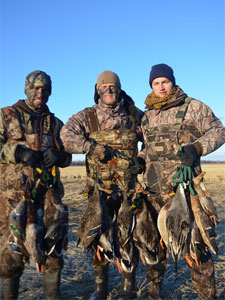Remington Versa Max Waterfowl Pro Shotgun
- Read more about Remington Versa Max Waterfowl Pro Shotgun
- 10528 views
As waterfowl hunters, there are topics of maintenance we tend to on a regular basis. We clean our shotguns, post-hunt, with almost a religious fervor. Boats are washed, decoys are organized and stored, and blind bags emptied, checked, double-checked, and repacked. Retrievers, too, are fed, rubbed down, and, if they are anything like ours, set to sleep on a blanket in front of the wood-burner. After all, they have certainly earned the right, eh?
It’s an old joke, but it’s quite appropriate given the topic here. A young man, an up-and-coming professional violinist and new to the Big City, asks a seasoned musician the question: “How do you get to Carnegie Hall?” Without a moment’s hesitation, the artist replies matter-of-factly: “Practice, young man. Practice.”
I’ve owned a lot of decoy bags
It’s true. There are some incredible public-land waterfowling opportunities scattered across this great nation of ours. Take, for instance, the Columbia River. Or Kansas’ Cheyenne Bottoms. The Mississippi. California’s refuge system. The Chesapeake Bay. Some hunters spend their entire duck hunting careers on these open-to-anyone waters, and wouldn’t think of going anyplace else.
Even so, I’ve enjoyed many memorable waterfowl hunts on private lands from coast to coast.
Things happen, guns fail and the perfect hiding spot isn’t always readily available. These things surmise the life of duck hunters who spend their time outdoors in the most unforgiving conditions.
One bird shy of a three-man waterfowl limit and Hunter (my yellow lab) continued to show the same anticipation as with the first retrieve.
Instead of following all the other waterfowl hunters to areas where pressure is heavy on ducks, geese and other acquatic game birds., search for out-of-the- way waters where there is very little pressure.
 Waterfowl hunters are a passionate group of people. Passion levels can generally be measured by the amount of time an individual waterfowler spends preparing for the upcoming season.
Waterfowl hunters are a passionate group of people. Passion levels can generally be measured by the amount of time an individual waterfowler spends preparing for the upcoming season.